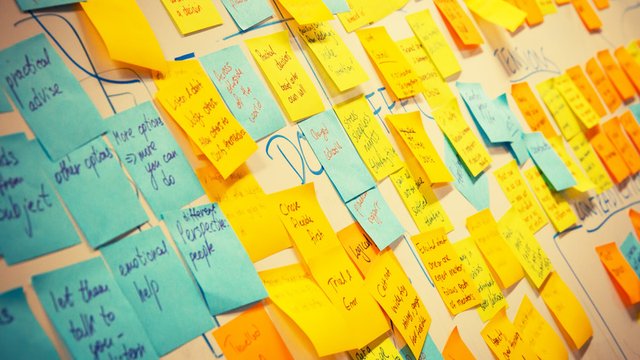

We have always heard that two heads are better than one. Putting multiple people to work as a team can bring many benefits to creativity and challenge solving, and techniques such as brainstorming are proof of this.
However, for a brainstorming process to be really effective, certain aspects and techniques must be taken into account, which we will mention in this article. In programmes such as the Degree in Marketing in Madrid or the Degree in Marketing in Valencia this work methodology is highlighted and studied in depth. Read on to find out more about the importance of brainstorming.
What does brainstorming mean and why is it used?
Brainstorming is a method by which people in a group exchange ideas without following a specific order or filter. Initially, these ideas are collected without any kind of evaluation or criticism and then analysed.
Brainstorming is used to generate a variety of unique and relevant ideas to help solve challenges or problems, similar to design thinking. Apart from fostering creativity and promoting different thinking approaches, it also contributes to establishing a culture of innovation and agility. It also serves as a starting point for planning individual or collective projects.
Types and techniques of brainstorming
There are different approaches and techniques within brainstorming, each adapted to different situations and needs. Among the most important are
- Direct: this is the most common form of brainstorming and can generate a large number of ideas in a very short time. In direct brainstorming, participants meet and present their ideas as they come to mind.
- Reverse brainstorming: this is the most commonly used technique for solving problems with creative solutions. It consists of thinking of different ways to cause the problem, rather than how to solve it.
- Individual: each participant is tasked with thinking of ideas on their own before sharing them with the whole group. This is the preferred mode for those who prefer to think privately before presenting their ideas to others.
- Star: each participant writes their ideas on sticky notes and then places them on a whiteboard. The group then discusses each proposal in detail.
- Gordon: participants present their ideas without prior knowledge of the problem to be solved. This method facilitates the free expression of ideas and helps to create the most innovative solutions.
- Round Robin: participants take turns to share their ideas. This ensures that each team member has the opportunity to contribute.
- Rolestorming: involves adopting different roles or perspectives to generate ideas, thus encouraging creativity and diversity of thought.
- Mind mapping: this is the most visual technique of all, through which participants organise and connect ideas from a central idea.
- What if: participants play with fictitious situations to solve a given problem. In this way, they can examine different scenarios and let their imagination run wild.
Steps for effective brainstorming
Now that you know the rules of brainstorming, it is important that you also know how to organise one through the following steps:
- State the problem: a brainstorming meeting should start with a clear presentation of the problem or issue to be addressed. It is crucial to define it properly to avoid confusion when proposing solutions later on.
- Establish the methodology: the creative director or a professional with a similar profile will be the person in charge of explaining the brainstorming process and acting as moderator during its execution.
- Brainstorming: this is the moment to present all the ideas that come to the participants' minds. At this point, it is essential that everyone participates and contributes as many ideas as possible.
- Final selection: at the end of the brainstorming session, the best ideas are selected according to their usefulness and feasibility for subsequent implementation.
Brainstorming is a powerful tool that fosters creativity and collaboration. By following basic rules and using different techniques learned in programmes such as the Master in Marketing, you can generate innovative ideas and solve problems effectively and with greater simplicity.